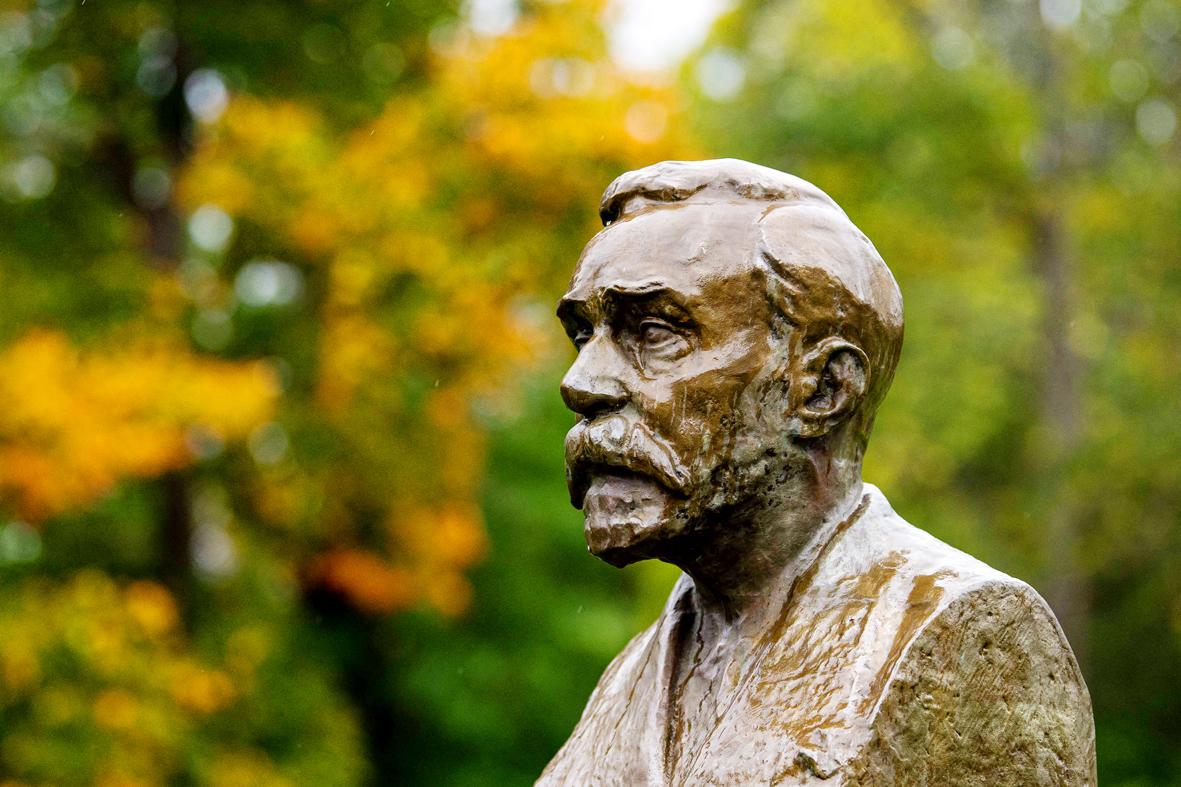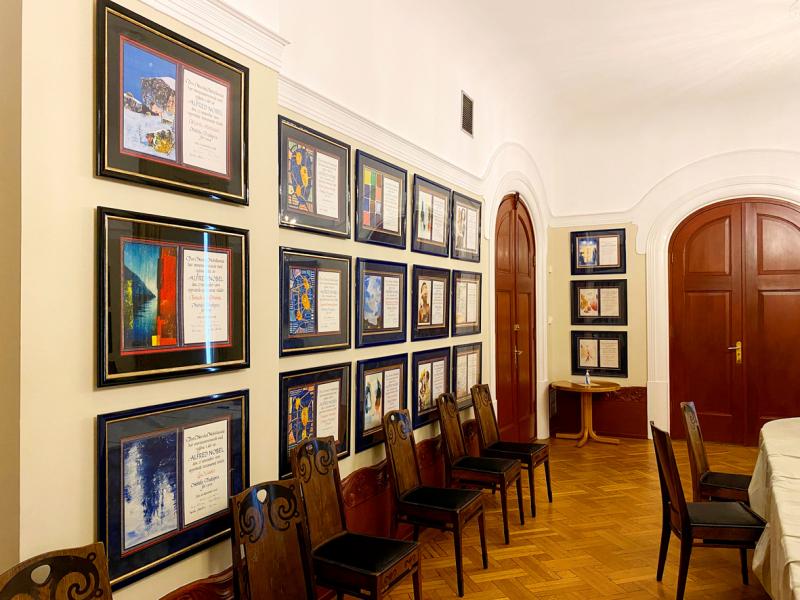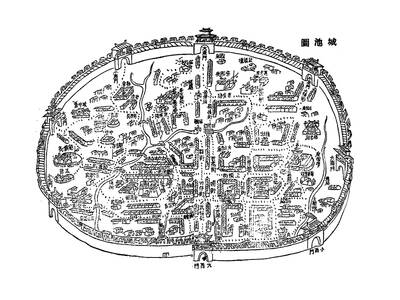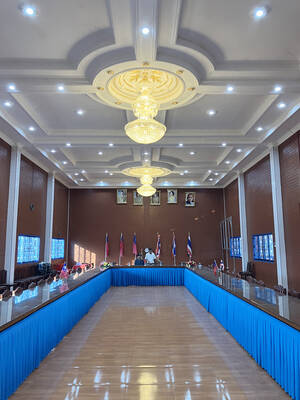Since 1901, the Nobel prizes have been awarded to men, women and organizations for work that has led to great advances for humankind, in line with the wishes of inventor Alfred Nobel.
Here are five things to know about the prizes and their creator.
A MISUNDERSTANDING?

Photo: AFP
On April 12, 1888, Alfred Nobel’s elder brother Ludvig died in Cannes, France. But newspaper Le Figaro mixed up the brothers and announced Alfred’s death on its front page under a rather inflammatory headline: “A man who can hardly be called a benefactor of humanity died yesterday in Cannes. He is Nobel, inventor of dynamite.”
Many credit this slight as the inspiration for Nobel’s creation of the prizes, pointing to the wording in his will that the awards should go to those who “have conferred the greatest benefit to humankind.”
“But we can only imagine” because the incident is not mentioned in his correspondence, his biographer Ingrid Carlberg said. As for the visitors who came to offer their condolences at the inventor’s Parisian mansion, they were surprised to be greeted by a very much alive Alfred, as reported by Le Figaro the following day.

Photo: Reuters
OLDER AND OLDER DISCOVERIES
In Nobel’s will, the rewards were to go to those who had served humanity “during the preceding year.” However, from the awards’ inception in 1901 and onwards, this has rarely been imperative. It often takes time for the true impact of discoveries to become known, and the number of worthy recipients is accumulating. As a result, work that is several decades old is often rewarded.
John Goodenough, for example, in 2019 became the oldest person to win a Nobel, at the age of 97. He is now the oldest living Nobel laureate, at 99. The youngest was Malala Yousafzai of Pakistan, who received the Nobel Peace Prize in 2017 at 17.

Photo: Reuters
POSTHUMOUS AWARDS
Since 1974, the statutes of the Nobel Foundation stipulate that the award may not be given posthumously. But a person may be awarded the honor if she or he dies between the time of the announcement in October and the formal prize ceremony in December.
Before the change, only two people had won a Nobel posthumously.
One was Dag Hammarskjold, the Swedish secretary-general of the United Nations who died in a plane crash in 1961 but was awarded the Nobel Peace Prize later the same year.
And in 1931, the Nobel Prize in Literature was awarded posthumously to another Swede, Erik Axel Karlfeldt.
In 2011, the medicine prize committee selected Ralph Steinman of Canada, unaware that he had passed away just three days before the honour’s announcement.
The foundation decided to nevertheless give him the prize.
UNLIKELY PEACE PRICE NOMINATIONS
From Adolf Hitler to Michael Jackson, Joseph Stalin to Benito Mussolini, the Nobel Peace Prize has seen its share of improbable, far-fetched or eyebrow-raising candidates in its 120-year existence. Hitler was nominated for the peace prize by a Swedish MP in January 1939, on the brink of the bloodiest conflict in history. The proposal, which was meant as sarcasm and aimed at discrediting the nomination of Britain’s Neville Chamberlain after the Munich Agreements, was withdrawn.
Serbian President Slobodan Milosevic, later tried for genocide, was also nominated, as was Jules Rimet, the “father” of the football World Cup.
ONLY ONE IN 20 FEMALE LAUREATES
While their representation among winners has been steadily increasing in the last decades compared to the early years, women still account for about just six percent of winners.
Since 2001, 28 women have been awarded all prizes combined, almost three times as many as in the previous two decades.
In 2009, five women received a Nobel prize, including the first female laureate in economics, American Elinor Ostrom — a record that has yet to be equalled.
“Nobel would have been annoyed by this statistic,” Ingrid Carlberg said.
“He was a feminist before his time, who defended women’s careers and admired female intellectuals.”
Economics has had the fewest women laureates at 2.3 percent, lower than the science prizes combined which have seen 3.7 percent women.
While slightly more evenly distributed, literature is still largely a male affair with 13.7 women among laureates, with the peace prize faring slightly better at 15.9 percent. Nevertheless, the first person to win the Nobel prize twice was Marie Curie, in 1903 in physics and in 1911 in chemistry.

May 26 to June 1 When the Qing Dynasty first took control over many parts of Taiwan in 1684, it roughly continued the Kingdom of Tungning’s administrative borders (see below), setting up one prefecture and three counties. The actual area of control covered today’s Chiayi, Tainan and Kaohsiung. The administrative center was in Taiwan Prefecture, in today’s Tainan. But as Han settlement expanded and due to rebellions and other international incidents, the administrative units became more complex. By the time Taiwan became a province of the Qing in 1887, there were three prefectures, eleven counties, three subprefectures and one directly-administered prefecture, with

Taiwan Power Co (Taipower, 台電) and the New Taipei City Government in May last year agreed to allow the activation of a spent fuel storage facility for the Jinshan Nuclear Power Plant in Shihmen District (石門). The deal ended eleven years of legal wrangling. According to the Taipower announcement, the city government engaged in repeated delays, failing to approve water and soil conservation plans. Taipower said at the time that plans for another dry storage facility for the Guosheng Nuclear Power Plant in New Taipei City’s Wanli District (萬里) remained stuck in legal limbo. Later that year an agreement was reached

What does the Taiwan People’s Party (TPP) in the Huang Kuo-chang (黃國昌) era stand for? What sets it apart from their allies, the Chinese Nationalist Party (KMT)? With some shifts in tone and emphasis, the KMT’s stances have not changed significantly since the late 2000s and the era of former president Ma Ying-jeou (馬英九). The Democratic Progressive Party’s (DPP) current platform formed in the mid-2010s under the guidance of Tsai Ing-wen (蔡英文), and current President William Lai (賴清德) campaigned on continuity. Though their ideological stances may be a bit stale, they have the advantage of being broadly understood by the voters.

In a high-rise office building in Taipei’s government district, the primary agency for maintaining links to Thailand’s 108 Yunnan villages — which are home to a population of around 200,000 descendants of the Chinese Nationalist Party (KMT) armies stranded in Thailand following the Chinese Civil War — is the Overseas Community Affairs Council (OCAC). Established in China in 1926, the OCAC was born of a mandate to support Chinese education, culture and economic development in far flung Chinese diaspora communities, which, especially in southeast Asia, had underwritten the military insurgencies against the Qing Dynasty that led to the founding of